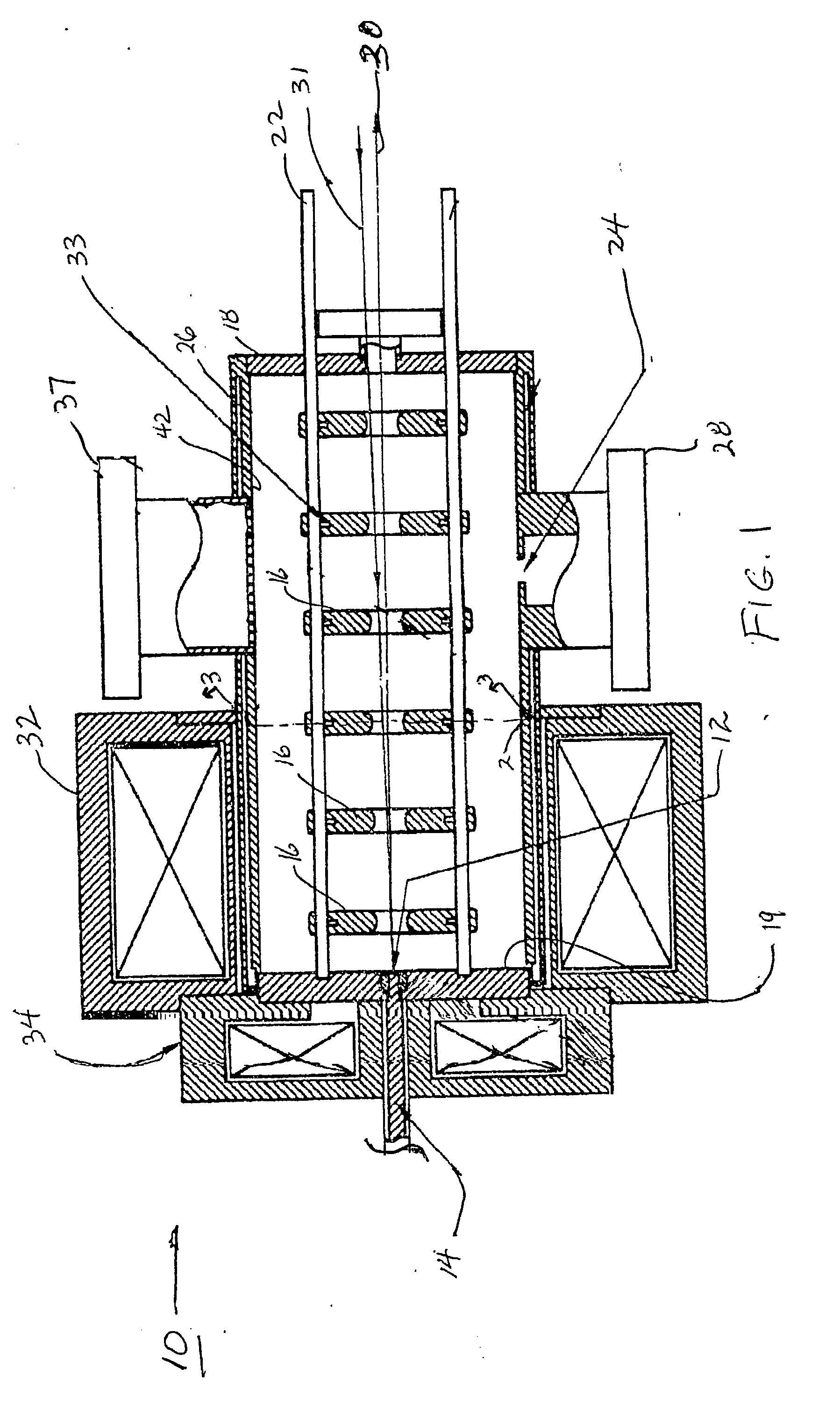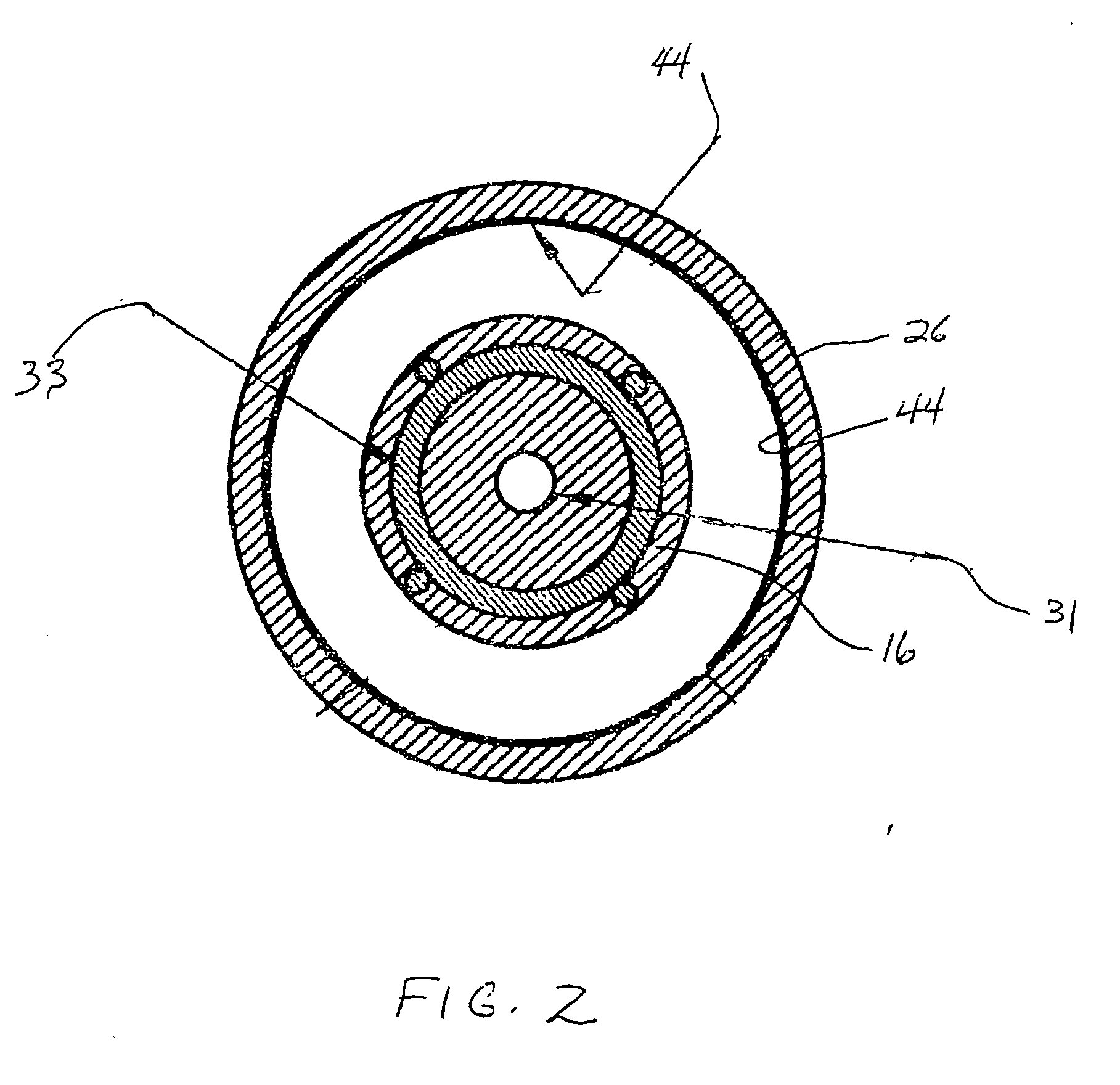Photoelectron linear accelerator for producing a low emittance polarized electron beam
a polarized electron and linear accelerator technology, applied in the direction of irradiation devices, nuclear engineering, therapy, etc., can solve the problems of large energy reduction, large energy reduction, and the effect of the space charge field still remains
- Summary
- Abstract
- Description
- Claims
- Application Information
AI Technical Summary
Benefits of technology
Problems solved by technology
Method used
Image
Examples
Embodiment Construction
[0020] FIG. 1 shows a schematic diagram of the polarized electron PWT photoinjector 10 of the present invention.
[0021] The integrated PWT photoelectron linear accelerator 10 which includes photocathode 12 is located directly inside the full accelerating structure and supported on demountable cathode assembly 14. The PWT linac 10 is a n-mode, standing-wave, linac structure which consists of a series of cylindrical disks 16 forming a disk assembly, each disk 16 being spaced half a wavelength apart, except for the first and last disks which are at a distance about a quarter wavelength from the end plates 18 and 19. The disk assembly is positioned within the tube, or tank, 26, and is supported by a water-carrying tube 22, tube 22 serving both to support and cool disks 16. A cooling channel 33 is provided to additionally cool the disks 16. Suspended along the axis of a large cylindrical tank, or tube, 26, the disk assembly defines a series of open cavities or cells. Unlike the convention...
PUM
 Login to View More
Login to View More Abstract
Description
Claims
Application Information
 Login to View More
Login to View More - R&D
- Intellectual Property
- Life Sciences
- Materials
- Tech Scout
- Unparalleled Data Quality
- Higher Quality Content
- 60% Fewer Hallucinations
Browse by: Latest US Patents, China's latest patents, Technical Efficacy Thesaurus, Application Domain, Technology Topic, Popular Technical Reports.
© 2025 PatSnap. All rights reserved.Legal|Privacy policy|Modern Slavery Act Transparency Statement|Sitemap|About US| Contact US: help@patsnap.com



